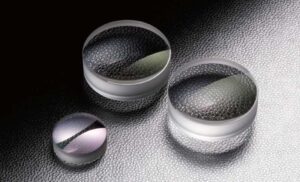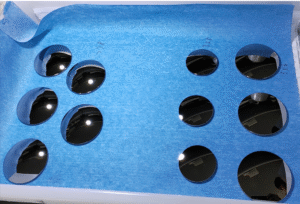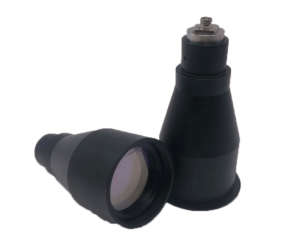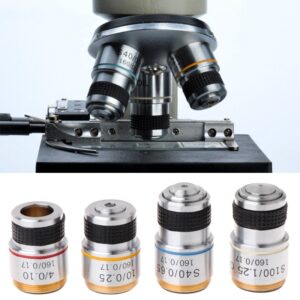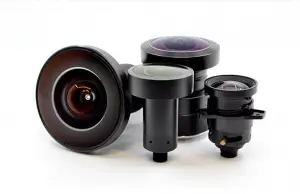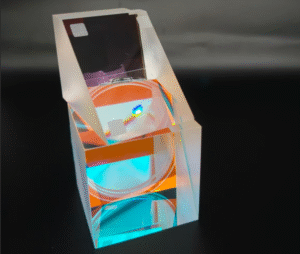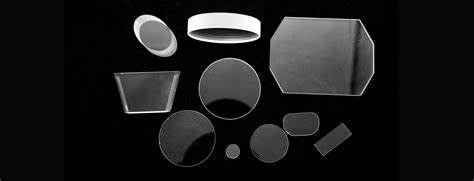Fused silica windows are highly durable optical components that offer superior transmission in the deep ultraviolet (DUV), visible, and near-infrared (NIR) wavelength ranges. They are made from high-purity amorphous silicon dioxide (SiO₂), with exceptional thermal, chemical, and optical properties.
Fused silica is often chosen for high-power laser systems, vacuum environments, and demanding applications where standard glass fails.
At Bote Optics, we supply precision-polished fused silica optical windows, with custom sizes, coatings, and thicknesses available to suit your specific needs.
What Is Fused Silica Glass?
Fused silica is non-crystalline silicon dioxide (SiO₂) produced by melting ultra-pure quartz. Unlike common glass, it contains no dopants or alkalis, making it extremely resistant to heat, shock, and chemical corrosion.
It is also known as:
- Fused quartz (when derived from natural quartz)
- Synthetic fused silica (like Corning 7980)
📌 Fused silica = high-purity SiO₂ = excellent optical performance.
Why Choose Fused Silica Windows?
| Property | Benefit |
|---|---|
| Wide Transmission Range | 185 nm to 2.5 µm (UV to NIR) |
| High Laser Damage Threshold | Suitable for high-power laser systems |
| Low Thermal Expansion | Excellent thermal stability (0.55×10⁻⁶ /°C) |
| High Purity | Low inclusions, minimal fluorescence |
| Resistant to Shock & Chemicals | Ideal for harsh environments |
Technical Specifications of Fused Silica Windows
| Parameter | Typical Value |
|---|---|
| Refractive Index (n, 589 nm) | 1.4585 |
| UV Transmission (at 200 nm) | >90% (uncoated) |
| Surface Quality | 10-5 to 60-40 (per MIL-PRF-13830B) |
| Thickness Tolerance | ±0.1 mm (customizable) |
| Parallelism | <3 arcmin (precision options available) |
| Available Coatings | UV AR, BBAR, V-Coat, IR Coatings |
Fused Silica Transmission Chart (UV to IR)
Fused silica exhibits outstanding transmission from 185 nm (deep UV) to 2.5 µm (NIR), outperforming standard optical glass in both clarity and thermal resistance.
A typical transmission graph:
Wavelength (nm) Transmission (%)
----------------- ----------------
200 92%
300 93%
500 93.5%
1000 92%
2000 89%
🧪 Need certified transmission test reports? We offer data sheets with every order.
Types of Fused Silica Windows
| Type | Features | Application Example |
|---|---|---|
| UV Grade Fused Silica | High DUV transmission, low fluorescence | UV spectroscopy, lithography |
| IR Grade Fused Silica | Optimized for 0.7–2.5 µm | NIR imaging, IR lasers |
| Optical Flats | High parallelism and surface flatness | Interferometry, metrology |
| Coated Windows | Custom AR/V-Coatings for wavelength bands | Laser optics, sensor protection |
| Fused Silica Sheets | Large sizes for cutting, fabrication | Custom optics or vacuum viewports |
Fused Silica vs. Fused Quartz
| Property | Fused Silica (Synthetic) | Fused Quartz (Natural) |
|---|---|---|
| Source | Chemical vapor deposition | Melted natural quartz |
| Purity | Higher (often >99.99%) | Slightly lower |
| Bubble/Inclusion | Minimal | May have small inclusions |
| UV Transmission | Superior | Good but slightly lower |
| Example Material | Corning 7980 | GE 124, Heraeus Quartz |
Corning 7980 Fused Silica
Corning 7980 is a high-purity, synthetic fused silica widely used for:
- High-energy lasers
- Semiconductor lithography
- Space-borne UV systems
Key Benefits:
- No bubbles or inclusions
- Low birefringence
- Exceptional UV and thermal stability
We support Corning 7980 material in both stock and custom sizes.
Fused Silica Refractive Index
The refractive index of fused silica is:
- ~1.4585 at 589 nm (visible range)
- Decreases slightly toward IR
📐 This low dispersion and stable index make it ideal for multi-element lens systems and interferometry.
Uses of Fused Silica Glass
Fused silica windows are used in industries including:
- 🔬 Scientific Instruments (microscopy, spectroscopy)
- ⚡ Laser Systems (YAG, CO₂, UV lasers)
- 🛰️ Aerospace & Defense (optical payloads)
- 🧪 Chemical Analysis Equipment (UV cuvettes)
- 🧼 Cleanroom & Vacuum Chambers (viewports)
- 💡 Lighting Systems (quartz lamp housings)
Why Is Silica Formula SiO₂?
Silicon dioxide (SiO₂) consists of one silicon atom bonded to two oxygen atoms. In fused silica glass, these form a continuous random network without long-range crystalline structure—giving it strength, thermal resistance, and optical clarity.
Fused Silica Window Price
Pricing depends on size, thickness, polish, and coatings. Here’s a sample reference:
| Size (mm) | Thickness | Coating | Price (USD, Approx.) |
|---|---|---|---|
| Ø25.4 × 2.0 | Uncoated | None | $12 – $20 |
| Ø25.4 × 2.0 | AR Coated | 400–700 nm | $20 – $35 |
| Ø50.8 × 3.0 | BBAR | 1064 nm | $45 – $80 |
| 100×100 × 5 mm | Flat Sheet | None | Contact Us |
📦 Volume discounts and OEM options available.
Cleaning & Handling
- Use lint-free wipes and ethanol or isopropanol
- Avoid fingerprints, moisture, and sudden temperature changes
- Handle with gloves; store in clean, dry containers
- Avoid exposing UV-coated optics to prolonged sunlight
Why Choose Bote Optics?
- ✅ Custom fabrication: sizes, coatings, edge finishes
- ✅ Fast delivery: prototypes or bulk shipments
- ✅ Strict quality control: interferometer testing, scratch-dig inspection
- ✅ Coating services: UV AR, IR BBAR, V-Coat, DLC
🔧 Whether you need standard optical flats or complex assemblies, we deliver precision fused silica optics to meet your specifications.
Get a Quote Now
Tell us your size, wavelength, and quantity — we’ll respond with a fast and competitive quote. We support global customers from research labs to OEM manufacturers.
📩 Contact our team today to get started.

